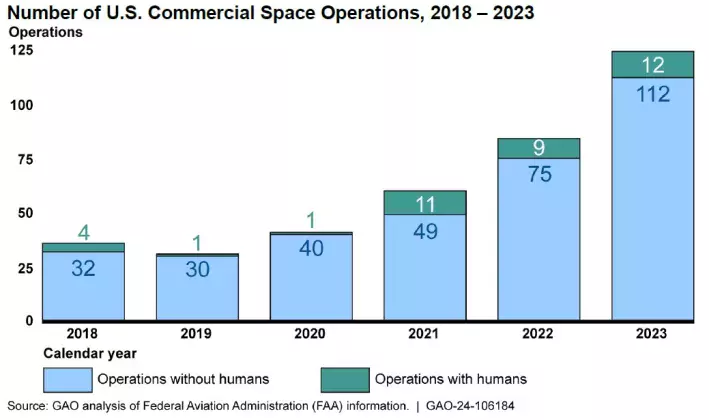Is the FAA Ready for More Space Travelers?
Planning your dream vacation? In the coming years, you may be able to check off a visit to space from your bucket list. The commercial space industry is rapidly growing, and more commercial launches have people onboard than ever before.
But those interested in these voyages to the final frontier might want to know what steps are being taken to protect their health and safety.
Today’s WatchBlog post looks at our new report about how the Federal Aviation Administration (FAA) is preparing for the growth in human space travel.
Image

Not just planes any more
While space travel may make you think of NASA, FAA is the agency responsible for making sure commercial space launches get off the ground safely. Commercial space operators that want to launch or reenter within U.S. borders need an FAA license.
But up until now, FAA has only been reviewing commercial space operations to ensure they don’t damage innocent bystanders or nearby property—not to ensure the safety of people onboard. Congress temporarily prohibited FAA from issuing regulations to protect the safety of people onboard space launches in 2004 to not overburden an emerging industry. This prohibition is currently scheduled to expire next month.
Although the prohibition has restricted FAA from issuing regulations, FAA still enforces some safety requirements through its licensing process. To be granted a license, operators must demonstrate that they can conduct the operation without jeopardizing the safety of the public and property not involved in the launch.
If and when the prohibition expires, FAA will have an expanded authority to protect the health and safety of humans onboard commercial space launches. The agency has started to prepare by updating its human spaceflight safety guidance for the first time in 9 years. This guidance—which outlines recommended practices for protecting humans and meeting their needs on commercial launches—could serve as a starting point for future safety regulations.
In addition, FAA has participated in industry committee working groups that are developing voluntary human spaceflight safety standards for commercial operators.
Small steps to prepare for a giant leap
While FAA has taken some steps, its progress on human spaceflight issues has been slow. FAA says that this is partly due to restrictions on what it can achieve while the prohibition is in place. But the agency is also constrained by staffing shortages. Although FAA has been trying to recruit new staff for its expanded oversight role, it is competing with private space companies for a small pool of skilled workers.
FAA’s Office of Commercial Space Transportation Employees Authorized and Employed, FYs 2015-2024
Image

FAA’s staffing shortage may be affecting its ability to oversee the commercial space industry. In our new report, agency officials told us that due to staffing constraints, FAA has had to conduct some of its licensing inspections remotely instead of in-person. And we reported in 2023 that resource constraints have also affected FAA’s ability to investigate commercial space launch mishaps.
Being understaffed isn’t a new problem for FAA. We recommended in 2019 that the agency improve its strategic workforce planning for its commercial space transportation office. Although FAA has since implemented two of our recommendations for addressing its skill gaps, it has more work to do. For example, by following our 2019 recommendation to develop workload metrics for its commercial space transportation responsibilities, FAA would be better able to determine how many staff it needs to adequately oversee this rapidly growing industry.
Learn more about FAA’s oversight of human spaceflight in our new report.
- GAO’s fact-based, nonpartisan information helps Congress and federal agencies improve government. The WatchBlog lets us contextualize GAO’s work a little more for the public. Check out more of our posts at GAO.gov/blog.


